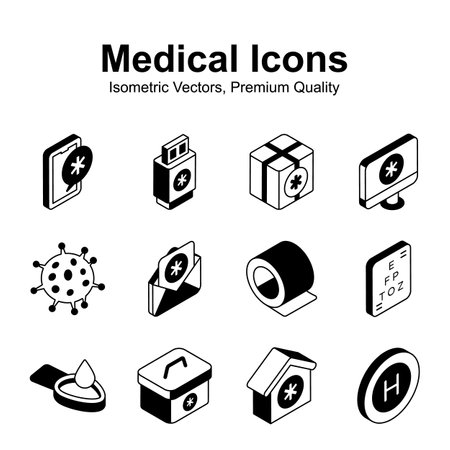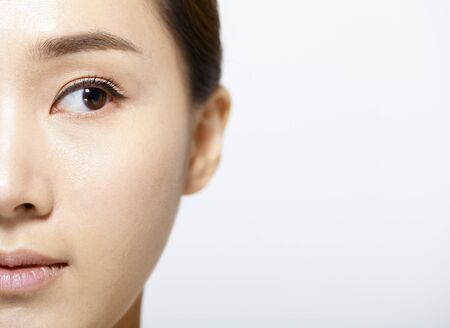Introduction to Under-Eye Fillers
Under-eye fillers, also known as tear trough fillers, have rapidly gained traction in the U.S. beauty and wellness market. These injectable treatments are designed to address common concerns such as dark circles, hollowness, and tired-looking eyes by adding volume beneath the eyes. The active ingredient in most under-eye fillers is hyaluronic acid, a gel-like substance that naturally occurs in the skin and helps retain moisture.
What Are Under-Eye Fillers?
Under-eye fillers are minimally invasive cosmetic procedures where a specialist injects a filler material directly into the area below your lower eyelids. The primary goal is to smooth out sunken areas, reduce shadowing, and create a more refreshed appearance. These treatments do not require surgery and typically involve minimal downtime.
Why Do People Get Under-Eye Fillers?
Many people in the U.S. choose under-eye fillers for several reasons:
- Appearance: To minimize dark circles or puffiness that make them look tired or older than they feel.
- Aging: To combat natural volume loss that comes with age.
- Confidence: To boost self-esteem by achieving a more youthful and rested look.
Popularity of Under-Eye Fillers in the U.S.
The demand for non-surgical cosmetic procedures has grown significantly in America over recent years. Social media trends, celebrity endorsements, and advances in aesthetic medicine have all contributed to the rise in popularity of under-eye fillers. Americans often prioritize quick results with minimal recovery time, making this treatment especially appealing.
Common Characteristics of Under-Eye Fillers
| Feature | Description |
|---|---|
| Main Ingredient | Hyaluronic Acid Gel |
| Purpose | Adds volume & reduces shadows under eyes |
| Treatment Time | 20-30 minutes per session |
| Pain Level | Mild discomfort (topical numbing applied) |
| Downtime | Minimal (some swelling/bruising possible) |
| Longevity | 6 months to 1 year on average |
| Popularity Factors | Quick results, non-surgical, trending on social media |
As you can see, under-eye fillers offer a non-surgical solution for those looking to refresh their appearance without committing to permanent changes or lengthy recoveries. Their growing appeal in American culture reflects an increasing desire for fast, effective, and minimally invasive beauty solutions.
2. How Under-Eye Fillers Work
The Science Behind Under-Eye Fillers
Under-eye fillers, also known as tear trough fillers, are a non-surgical cosmetic treatment designed to reduce the appearance of dark circles, hollows, and mild under-eye bags. The main goal is to restore lost volume beneath the eyes, giving a smoother and more refreshed look. This procedure uses injectable gels that fill in sunken areas and blend the transition between the lower eyelid and the cheek.
Types of Fillers Used
The most common type of filler used for under-eye treatments is hyaluronic acid (HA). Hyaluronic acid is a naturally occurring substance in our bodies that attracts water and adds plumpness to the skin. Some popular brands include Restylane and Juvederm. Occasionally, other types like calcium hydroxylapatite (Radiesse) or poly-L-lactic acid (Sculptra) might be used, but these are less common due to their thicker texture or different properties.
| Filler Type | Main Ingredient | Common Brands | Longevity | Reversibility |
|---|---|---|---|---|
| Hyaluronic Acid (HA) | Hyaluronic Acid | Restylane, Juvederm | 6-12 months | Yes (with hyaluronidase) |
| Calcium Hydroxylapatite | Mineral-based particles | Radiesse | 12-18 months | No |
| Poly-L-lactic Acid | Synthetic polymer | Sculptra | Up to 2 years | No |
The Procedure: Step by Step
- Consultation: The process starts with a detailed consultation where your provider evaluates your facial anatomy, discusses expectations, and reviews your medical history.
- Cleansing and Preparation: The under-eye area is cleaned thoroughly to minimize infection risk. A topical numbing cream may be applied for comfort.
- Marking: Your provider marks specific injection points based on your unique facial structure.
- Injection: Using a very fine needle or a blunt-tipped cannula, the filler is carefully injected into precise locations under the skin. The product is then gently massaged to ensure even distribution.
- Assessment: Your provider checks symmetry and makes any necessary adjustments.
- Aftercare: Ice packs may be offered to reduce swelling, and you’ll receive instructions on what to avoid (like heavy exercise or rubbing the area) for the next day or so.
What Patients Can Expect During Treatment
- Pain Level: Most people experience minimal discomfort thanks to numbing creams and gentle techniques. You might feel slight pressure or pinching during injection.
- Treatment Time: The entire procedure usually takes 15-30 minutes.
- Immediate Results: You’ll notice fuller under-eyes right away, although mild swelling or bruising can occur for a few days.
- No Downtime: Most patients return to normal activities immediately after leaving the clinic.
- Sensitivity: The under-eye area is delicate, so results depend heavily on your injector’s skill and experience. Choosing a qualified professional is key for safety and natural-looking outcomes.

3. Benefits of Under-Eye Fillers
Immediate Results
One of the main reasons people choose under-eye fillers is the quick transformation. Most patients notice a visible difference right after their treatment session. The filler instantly adds volume and smooths out the hollow or dark circles, making you look refreshed and less tired almost immediately.
Minimal Downtime
Unlike surgical options, under-eye fillers require very little recovery time. You can usually go back to your normal activities right after the procedure. Some mild swelling or bruising might happen, but it often resolves within a few days.
Quick Comparison: Fillers vs. Surgery
| Treatment | Recovery Time | Return to Daily Activities |
|---|---|---|
| Under-Eye Fillers | 1-3 days (minor swelling/bruising) | Same day or next day |
| Surgical Procedures | 1-2 weeks (more swelling/bruising) | After several days to a week |
Common Improvements Seen by Patients
- Smoother Under-Eye Area: Fills in hollows, reducing the appearance of sunken eyes.
- Diminished Dark Circles: Adds volume to mask shadows that create dark circles.
- Younger Appearance: Reduces fine lines and gives a fresher, more awake look.
- Boosted Confidence: Many people feel better about their appearance after treatment.
Summary Table: Key Benefits of Under-Eye Fillers
| Benefit | Description |
|---|---|
| Instant Results | Visible improvements right after the procedure |
| No Surgery Needed | No incisions or stitches required, making it less invasive than surgery |
| Lifestyle Friendly | No long downtime; get back to work or daily routines quickly |
| Naturally Refreshed Look | Makes you look rested without appearing overdone or unnatural when performed by an experienced provider |
| Temporary and Adjustable | If you don’t like the results, most fillers can be adjusted or dissolved by your provider |
4. Potential Risks and Side Effects
If you’re thinking about getting under-eye fillers, it’s important to understand the possible risks and side effects that can come with the procedure. While many people have positive experiences, not every treatment goes perfectly smooth. Here’s what you need to know as a patient in the U.S.
Common Short-Term Side Effects
Most people experience mild and temporary side effects right after their filler appointment. Here’s a quick overview:
| Side Effect | Description | How Long It Lasts |
|---|---|---|
| Swelling | Puffiness around the injection site | A few days to one week |
| Bruising | Visible purple or blue marks under the eyes | Up to two weeks |
| Tenderness | Soreness or sensitivity where the needle was used | A few days |
| Redness | Mild redness at injection points | A few hours to a day |
Possible Complications and Long-Term Risks
While rare, some complications can be more serious. Here are a few possibilities:
- Lumps or Bumps: Sometimes the filler doesn’t spread evenly, causing visible lumps under the skin.
- Tyndall Effect: A bluish tint may appear if filler is injected too close to the skin’s surface. This effect is more common in the delicate under-eye area.
- Infection: Any injection carries a risk of infection, though this is uncommon with proper technique.
- Vascular Complications: If filler accidentally enters a blood vessel, it can block blood flow and cause tissue damage. This is very rare but serious.
- Long-Term Changes: Over time, repeated filler use may stretch the skin or cause lasting changes in texture.
FDA Considerations for U.S. Patients
The FDA has only approved certain hyaluronic acid-based fillers for use in facial areas, but not specifically for under-eye (tear trough) correction. Many providers use these fillers “off-label,” which is legal but means extra caution should be taken. Always make sure your injector is experienced and using FDA-approved products, even if they’re being used off-label.
Key Points to Discuss With Your Provider:
- What type of filler will be used?
- Is this product FDA-approved?
- What experience does your provider have with under-eye injections?
- What steps are taken to minimize risks?
- What should you do if you notice any unusual symptoms after treatment?
5. Costs and Accessibility in the U.S.
Overview of Price Ranges
The cost of under-eye fillers can vary widely across the United States, depending on factors like location, the expertise of the injector, and the type of filler used (such as hyaluronic acid-based products). Here’s a general breakdown:
| Location | Average Cost per Session |
|---|---|
| Major Metropolitan Areas (e.g., New York, Los Angeles) | $800 – $1,500 |
| Suburban Areas | $600 – $1,200 |
| Rural Areas | $500 – $900 |
Keep in mind that most people need at least one full syringe for both eyes, and touch-ups may be needed every 6-12 months.
Insurance Coverage
Under-eye fillers are considered cosmetic procedures, which means they are almost never covered by health insurance. Patients should plan to pay out-of-pocket. Some clinics offer payment plans or financing options to make the treatment more accessible.
Access to Treatment
Metropolitan vs. Suburban Areas
- Metropolitan Areas: There is generally a higher concentration of board-certified dermatologists and plastic surgeons who perform under-eye filler treatments. These areas often have shorter wait times and a wider variety of providers with advanced training.
- Suburban Areas: Access is still good but slightly more limited compared to big cities. You might find fewer specialists, but prices can be somewhat lower due to less competition and lower overhead costs.
What About Small Towns?
If you live in a rural area, you may have to travel to a larger city or suburb for experienced providers. It’s essential to prioritize safety and experience over convenience when choosing your injector.
6. Is It Worth It? Weighing the Decision
Deciding whether to get under-eye fillers can feel overwhelming, especially with so many factors to consider. To help you make an informed choice that fits your personal needs and goals, lets break down the main points in a clear, balanced way.
Understanding Your Priorities
Start by thinking about what matters most to you. Are you hoping for a quick confidence boost before a big event, or are you looking for a longer-term solution to under-eye concerns? Understanding your motivation will help guide your decision.
Key Pros and Cons at a Glance
| Pros | Cons |
|---|---|
| Instant visible results | Temporary effects (usually 6-12 months) |
| Minimally invasive procedure | Possible side effects (bruising, swelling) |
| No downtime required | Cost can add up with repeat treatments |
| Can improve self-confidence | Not suitable for everyone (certain health conditions) |
| Customizable to your needs | Poor technique can lead to unnatural results |
Your Lifestyle and Expectations Matter
If you have a busy lifestyle and need minimal recovery time, under-eye fillers may fit well into your schedule. However, if youre seeking permanent change or want to avoid ongoing maintenance, it might not be the best fit. Also, keep realistic expectations—while fillers can help reduce hollowness and shadows, they cant address all under-eye issues like severe puffiness or loose skin.
Questions to Ask Yourself Before Deciding
- What is my main goal—appearance, confidence, or both?
- Am I comfortable with possible side effects and maintenance?
- Do I have any underlying medical conditions that might affect the outcome?
- Is my budget aligned with the cost of initial and repeat treatments?
- Have I researched qualified providers in my area?
A Balanced Approach
The right answer depends on your priorities and circumstances. Many people are happy with their results and appreciate the low-commitment nature of fillers. Others prefer more permanent solutions or decide against cosmetic procedures altogether. Take your time to weigh the pros and cons alongside your personal goals so you can move forward with confidence—whatever you choose.


